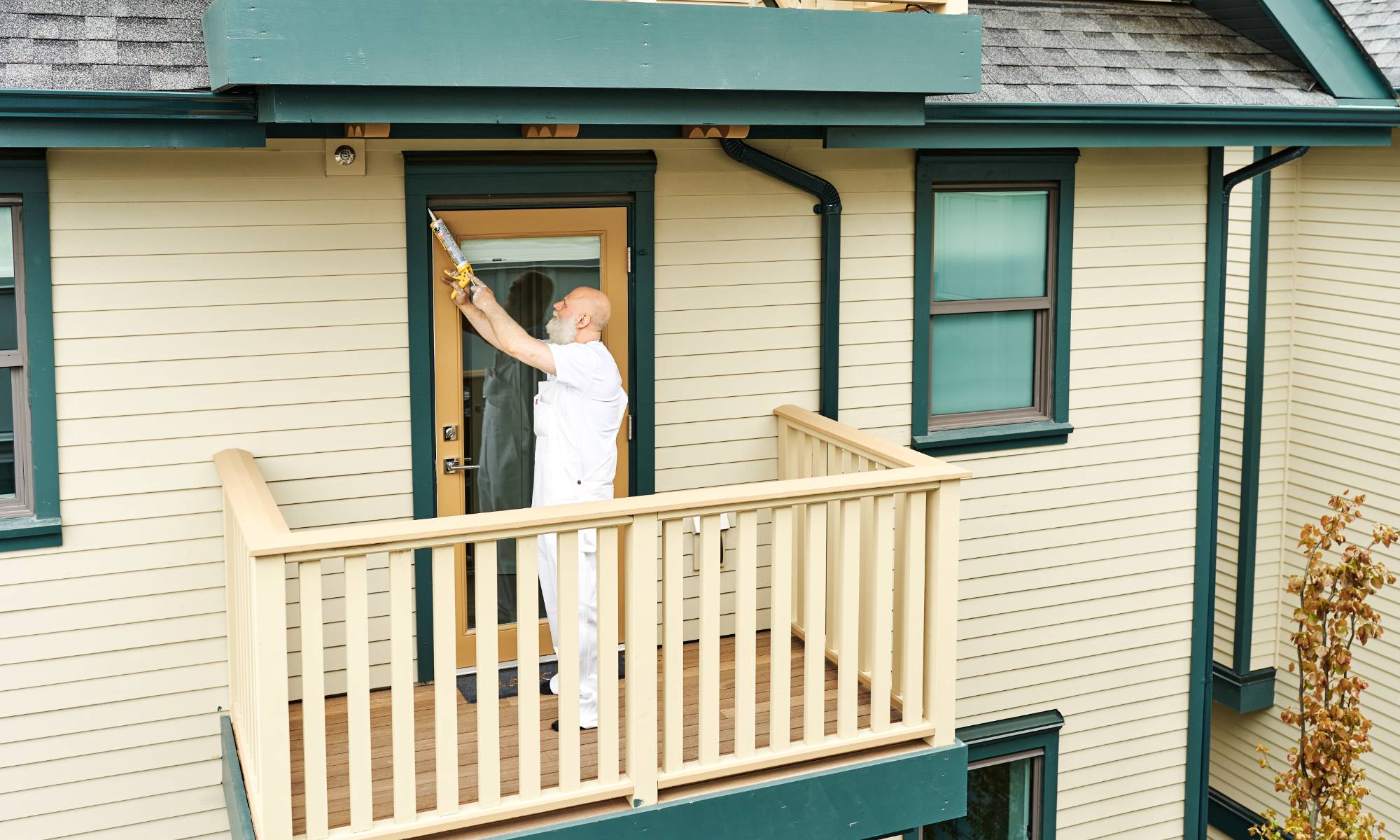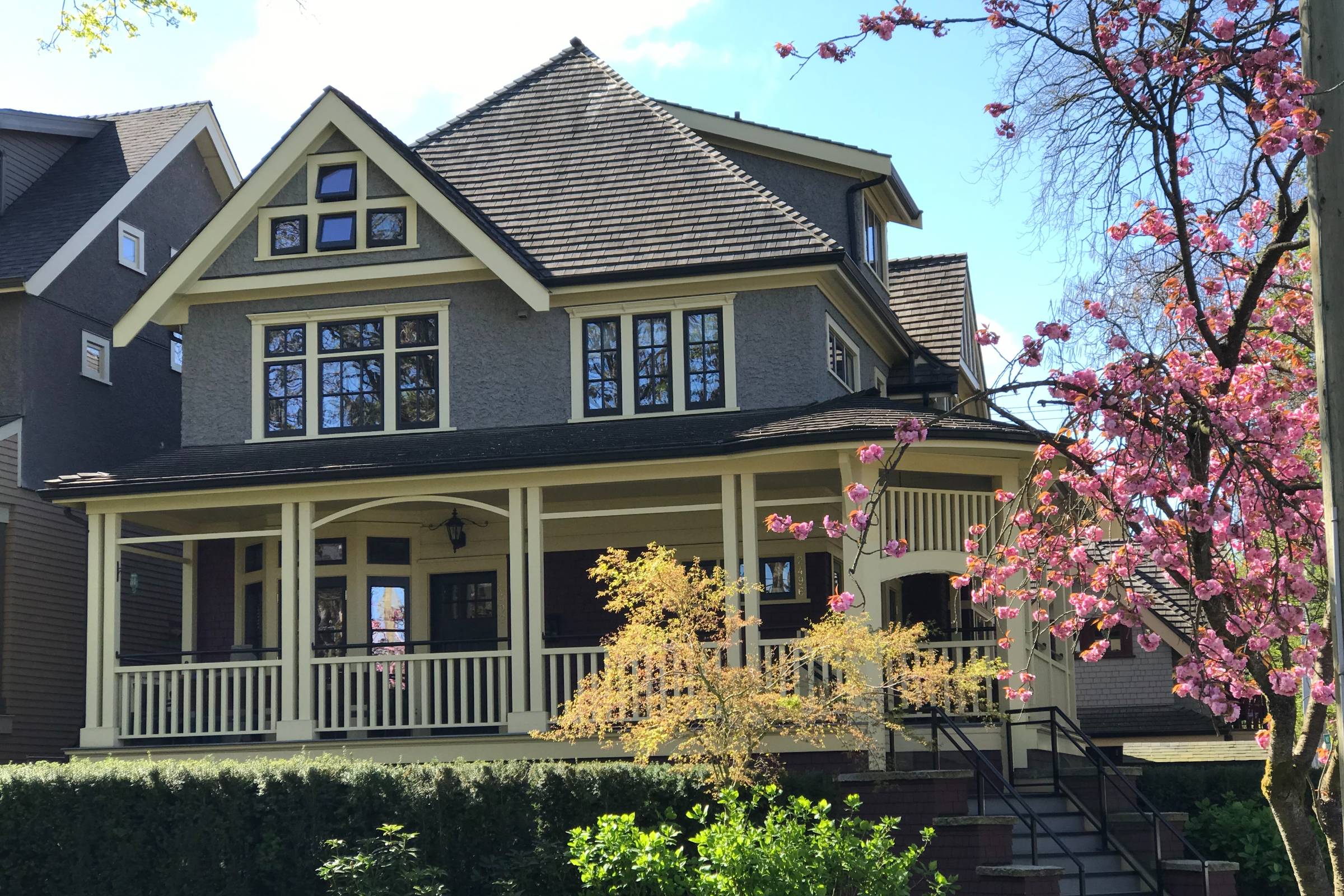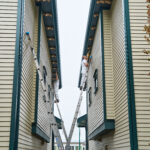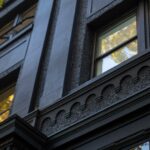Wind, rain, sun, and freeze-thaw don’t take a season off—and a house shouldn’t either. A well-chosen coating turns walls, trim, and siding into a first line of defense that still looks good after months of abuse. Smart prep and the right exterior paint keep small problems from becoming big repairs.
Paint Serving As a Tough Exterior Paint Shield Against Moisture-Triggered Rot
Moisture is crafty; it sneaks through hairline gaps, saturates end grain, and lingers in shadows where sunlight never quite dries the surface. A quality coat creates a continuous barrier that blocks capillary uptake, especially along window sills, drip edges, and cut ends. The trick is coverage—full mil thickness, even corners brushed out, and laps feathered before they set—so the exterior shell has no thin spots that invite water.
Rot follows moisture, but only if the wood stays wet long enough. Coatings that include mildewcides, robust binders, and tight adhesion starve fungi of their habitat. Pay attention to fastener heads and knots; spot-priming them prevents micro-pathways that carry dampness under the film. With careful surface cleaning and a measured application rate, exterior paint functions like a tailored raincoat rather than a flimsy poncho.

UV-Resistant Exterior Paint Holding Back Harsh Sun-Fueled Fading and Damage
Sunlight chews through color by breaking chemical bonds in pigments and binders. High-grade formulas pack UV absorbers and light-stable colorants that resist chalking, so hues hold their punch through long summers. Gloss retention matters too; a steady sheen sheds dirt and slows degradation, helping the exterior keep its crisp profile even after weeks of direct exposure.
Heat compounds the problem by driving thermal expansion, which stresses a brittle film. Flexible, UV-tough coatings bend a little instead of snapping, keeping micro-cracks from forming. Pairing reflective tints with proper surface prep curbs hot-spot temperatures around south- and west-facing walls. With the right blend of resins and stabilizers, exterior paint keeps color honest and the film intact.
Acrylic Exterior Paint Flexing Through Temperature Swings Without Cracking
Seasonal swings push siding through constant movement—tiny stretches at noon, slight contraction after sunset. Acrylic latex behaves like a springy net, using long polymer chains that elongate under stress and relax without tearing. That elasticity matters near joints, mitered corners, and nail heads where a rigid coating would check and craze, inviting water under the exterior surface.
Cold weather introduces another test: low-temperature coalescence. Premium formulas maintain film integrity even during cool spells, so early fall jobs don’t fail by spring. Add in superior adhesion to chalky remnants (after proper cleaning) and you get a coating that grips, flexes, and stays quiet through heatwaves and frosts. The payoff is fewer hairline fractures and longer intervals before new exterior paint is needed.
Exterior Paint Reinforced with Primer or Caulking to Seal out Moisture Entirely
Think of primer as the handshake between substrate and finish coat. It seals porous fibers, blocks stains, and levels absorption so color sits evenly. On weathered wood, bonding primer locks down residual chalk and boosts adhesion, creating a uniform base that keeps the exterior finish from flashing or peeling in the first hard rain.
Joints and penetrations are the other weak links. Elastomeric caulks, used with backer rod and proper joint design, expand and compress without pulling away from siding or trim. Sealant continuity is everything—no skips around light fixtures or half-filled gaps near fascia returns. With seams sealed and primer set, exterior paint forms a continuous film that shrugs off driving storms.

Protective Exterior Paint Calming Wood Swelling and Shrinking Through Seasons
Wood is hygroscopic; it swells as humidity rises and shrinks as dry air returns. A protective film slows that cycle by moderating moisture exchange, which reduces stress at joints and preserves tight miters. End grain needs special attention because it drinks water like a straw; sealing cuts and board ends keeps the exterior profile stable even during wet spells.
Movement isn’t uniform—tangential swell beats radial—so boards can cup if only one face is shielded. Coating all sides where feasible, or at least back-priming trim and siding, balances uptake and prevents warp lines. Fewer seasonal shifts mean fewer popped nails, fewer opened seams, and a calmer wall that holds its plane. In short, disciplined prep and exterior paint turn a restless material into a better neighbor for changing weather.
Seasonal Repainting with Exterior Paint Revealing Hidden Damage Before It Spreads
Maintenance cycles do more than refresh color; they expose problems early. Scraping, sanding, and washing reveal hairline splits around window rails, soft spots near kick-out flashing, and swollen trim behind downspouts. Those small flags are easier to fix before storms return, and a fresh coat puts the exterior back in fighting shape before winter sets in.
Seasonal timing helps. Late spring or early fall offers kinder temperatures and humidity, giving films ideal cure conditions. Crews can spot oxidized areas, fastener corrosion, or failing sealant while ladders are up, then correct them in one trip. That rhythm—inspect, repair, coat—extends service life and reduces emergency calls. Consistent exterior paint cycles transform reactive fixes into simple, predictable care.
Partner With Pro Crew Painting To Secure Weather-Ready Protection, Rich Color, And Long-Term Value With A Field-Proven Process From Prep To Final Coat
Homes face real weather and real wear, and a focused team turns that reality into a plan. Pro Crew Painting maps each surface by exposure, selects the right primer stack, and sets application targets by mil thickness so the film lasts. We fix the details that break coatings—open joints, end grain, fastener bleed—before a brush ever moves. That approach keeps the exterior looking sharp and working hard through storm season and summer sun.
Clients get clear timelines, daily updates, and a clean site at day’s end. Crews stage thoughtfully, protect landscaping, and leave trim lines that hold up to close inspection. If your siding needs a system rather than a single coat, the team builds it piece by piece—breathable where it should be, tight where it must be, and beautiful everywhere. Ready to give your home a durable shield and a finish that looks right in every season? Contact us.









